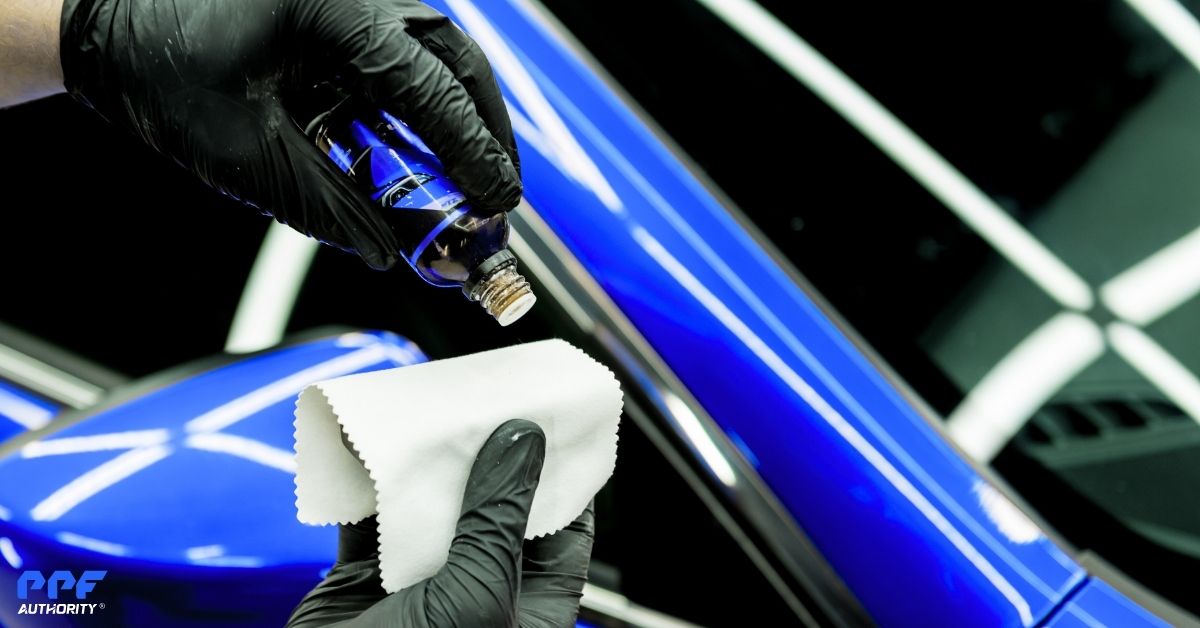Introduction
Color Paint Protection Film (PPF) is an excellent way to combine vehicle protection with aesthetic customization. With options like gloss, matte, satin, and metallic finishes, color PPF allows you to create a unique look for your car while shielding its paint from scratches, chips, and UV damage.
However, installing color PPF is far more complex than standard clear PPF, requiring advanced skills and meticulous attention to detail. In this article, we’ll discuss the challenges of installing color PPF, focusing on color matching, panel alignment, and edge wrapping.
The Difficulty of Color Matching
Why Color Matching Is Critical
Color PPF enhances your car’s appearance, but achieving a flawless finish relies on perfect color consistency across every panel. Unlike clear PPF, any imperfections in color matching are immediately visible, and even slight discrepancies can disrupt the vehicle’s overall look.
Key Challenges
Single-Color Rolls
- Limited Variability: Color PPF rolls are manufactured in single, uniform colors. Installers must carefully cut and align the film to ensure consistent shading across adjoining panels.
- Batch Variations: Differences in color or texture can occur between rolls from different production batches, making it essential to use film from the same lot.
Multiple Colors or Accents
- Adding a secondary color or accent design increases the difficulty of ensuring smooth transitions between colors.
- Finishes like matte, gloss, or satin reflect light differently, requiring careful planning to maintain a cohesive look.
Why Professionals Excel
Expert installers rely on precision tools and years of experience to cut and align the film perfectly. They also source materials from a single batch and test-fit pieces before final application to avoid mismatches.
The Complexity of Panel Alignment
Why Panel Alignment Matters
Modern vehicles feature intricate body designs with curves, contours, and creases that add character but pose challenges for PPF installation. Proper alignment ensures that the film fits seamlessly and complements the vehicle’s design.
Key Challenges
Complex Shapes and Curves
- Areas like fenders, bumpers, and side mirrors have irregular shapes that require careful stretching and shaping of the film.
- Misalignment can cause the film to bunch, wrinkle, or leave gaps, compromising both aesthetics and protection.
Symmetry Across Panels
- Multi-panel installations, such as hood-to-roof or side doors, require symmetrical alignment to maintain a professional, polished appearance.
- Any misalignment can disrupt the continuity of the design, making the installation appear unprofessional.
How Experts Solve It
Professional installers use pre-cut templates created with computerized plotters to ensure precise cuts that match the car’s dimensions. This reduces the likelihood of misalignment and allows for a seamless finish.
The Art of Wrapping Edges
Why Edge Wrapping Is Important
Wrapping edges ensures the PPF adheres securely to the vehicle and prevents lifting, peeling, or exposing the paint beneath. Proper edge wrapping is particularly critical for color PPF, as any exposed edges can reveal the underlying paint color, detracting from the custom look.
Key Challenges
Tight Spaces and Hidden Edges
- Wrapping film around tight areas like door edges, wheel arches, or trunk openings requires precision and finesse.
- Poorly wrapped edges can leave gaps or result in visible edges that reduce the overall aesthetic.
Stretching Without Damage
- Stretching the film too much can cause discoloration or distort the texture, especially with matte or satin finishes.
- Overstretching may also weaken the adhesive, leading to lifting or peeling over time.
Durability Concerns
- Edges that are not properly wrapped and sealed are more vulnerable to dirt, moisture, and debris, which can degrade the film over time.
Professional Techniques
- Installers use heat guns to carefully shape and stretch the film around edges without causing damage.
- Specialized tools, like squeegees and edge rollers, ensure the film adheres smoothly and securely to every contour.
- Professionals also use edge-sealing solutions to enhance durability and prevent peeling.
Why Professional Installation Is Essential
1. Expertise in Advanced Techniques
- Professionals have the skills to manage the intricacies of color matching, alignment, and edge wrapping.
- Their experience allows them to anticipate challenges and deliver a flawless installation.
2. Access to Precision Tools
- Computerized plotters create exact-fit templates, minimizing cutting errors.
- Professional tools, such as heat guns and squeegees, ensure the film adheres properly to curves and edges.
3. Long-Lasting Results
- A professionally installed color PPF wrap not only looks stunning but also lasts longer.
- Proper installation prevents peeling, bubbling, or lifting, preserving the film’s aesthetic and protective qualities.
Conclusion
Installing color PPF is a complex process that requires exceptional attention to detail, especially when it comes to color matching, panel alignment, and edge wrapping. While DIY installations may seem appealing, the challenges involved make professional installation the best choice for achieving a flawless, durable finish.
By trusting skilled professionals, you can ensure your color PPF not only enhances your vehicle’s appearance but also provides long-lasting protection against the elements. Whether you’re opting for a full wrap or accenting your car with secondary colors, the expertise of a professional installer will make all the difference in the final result.
